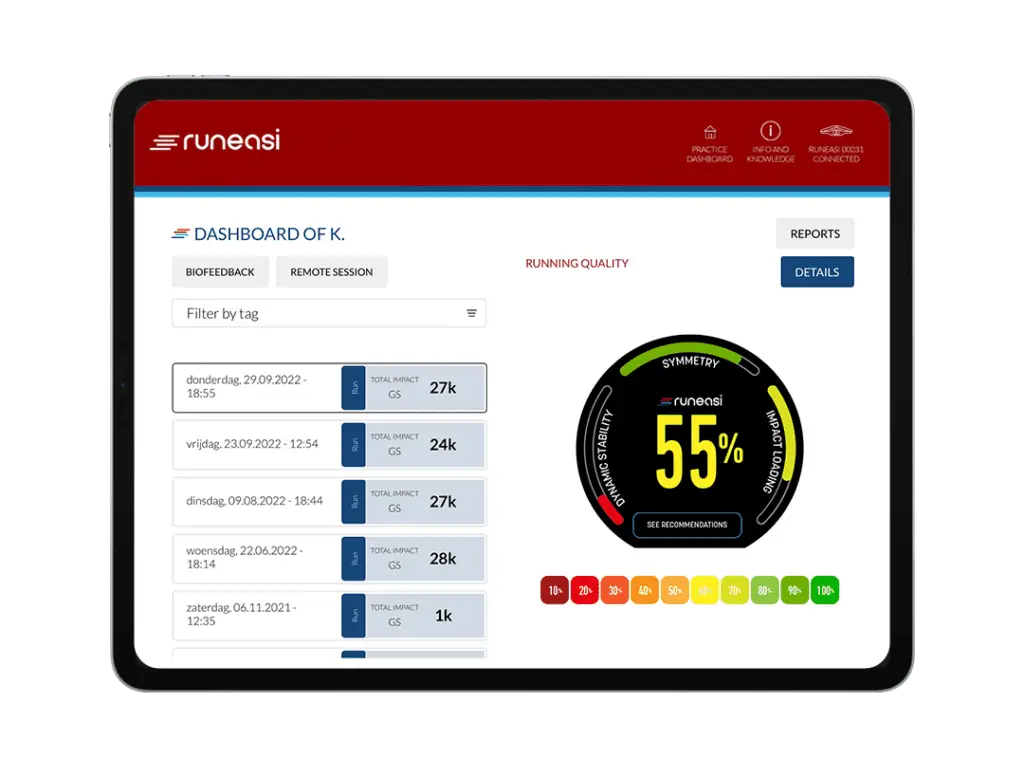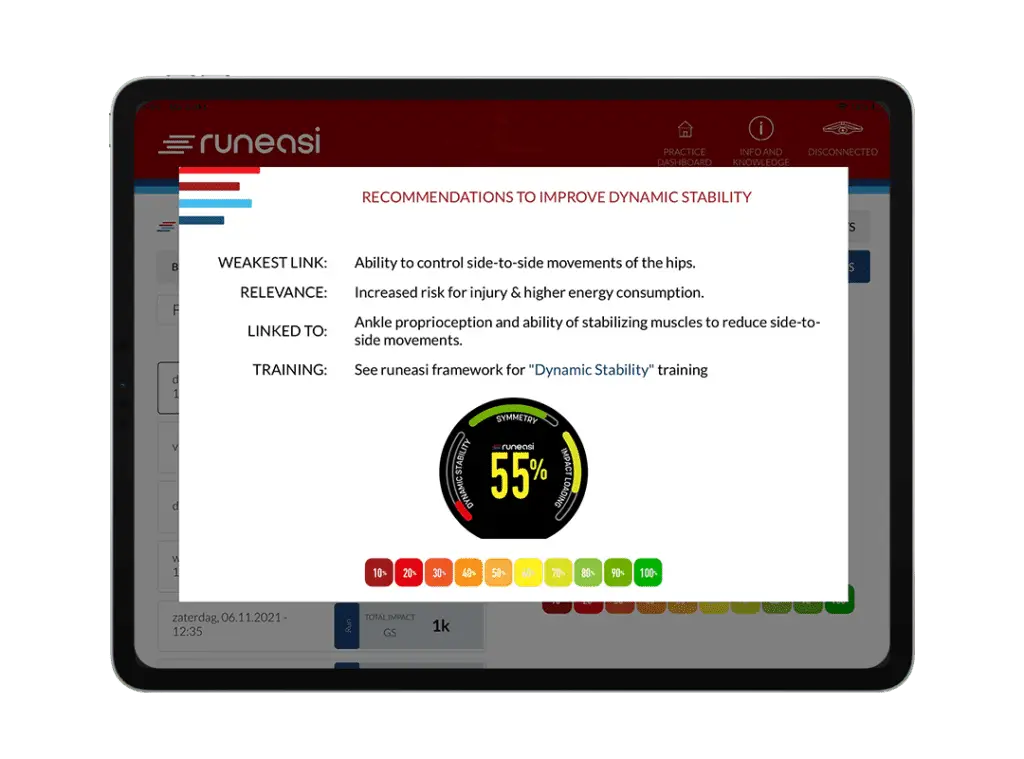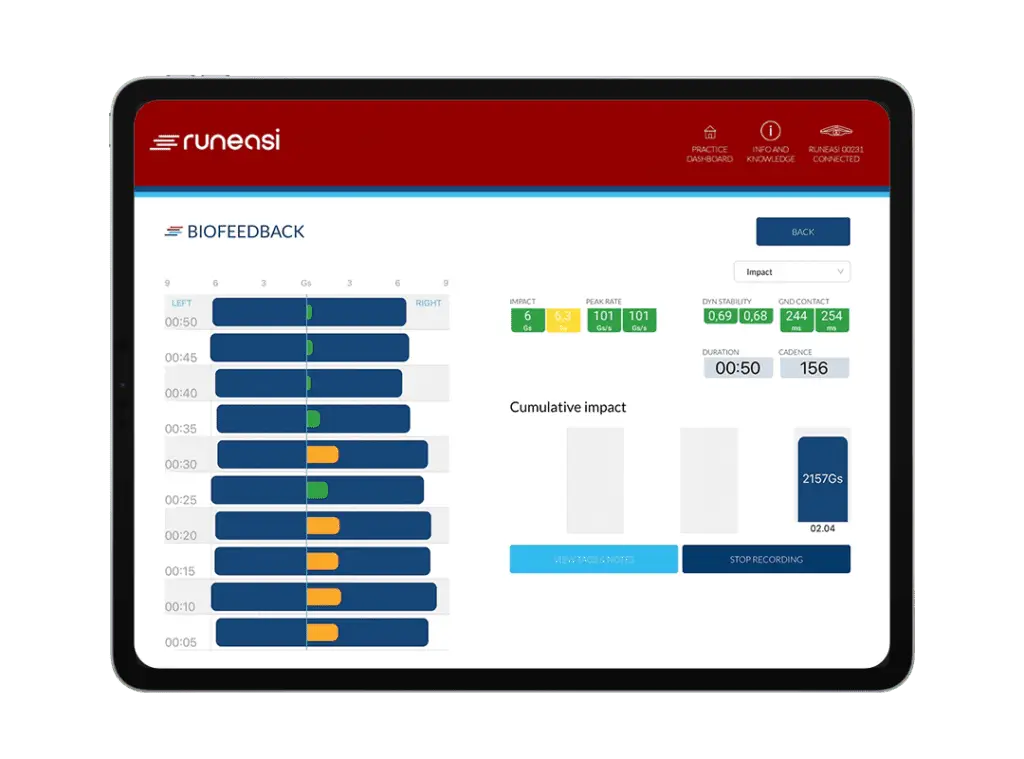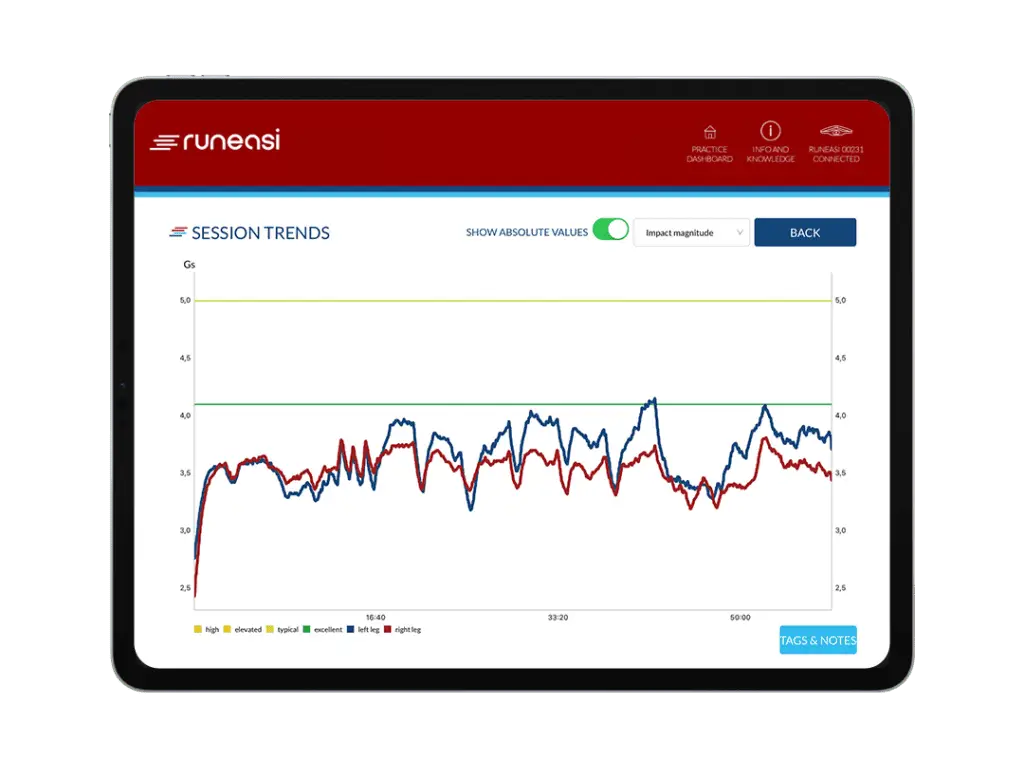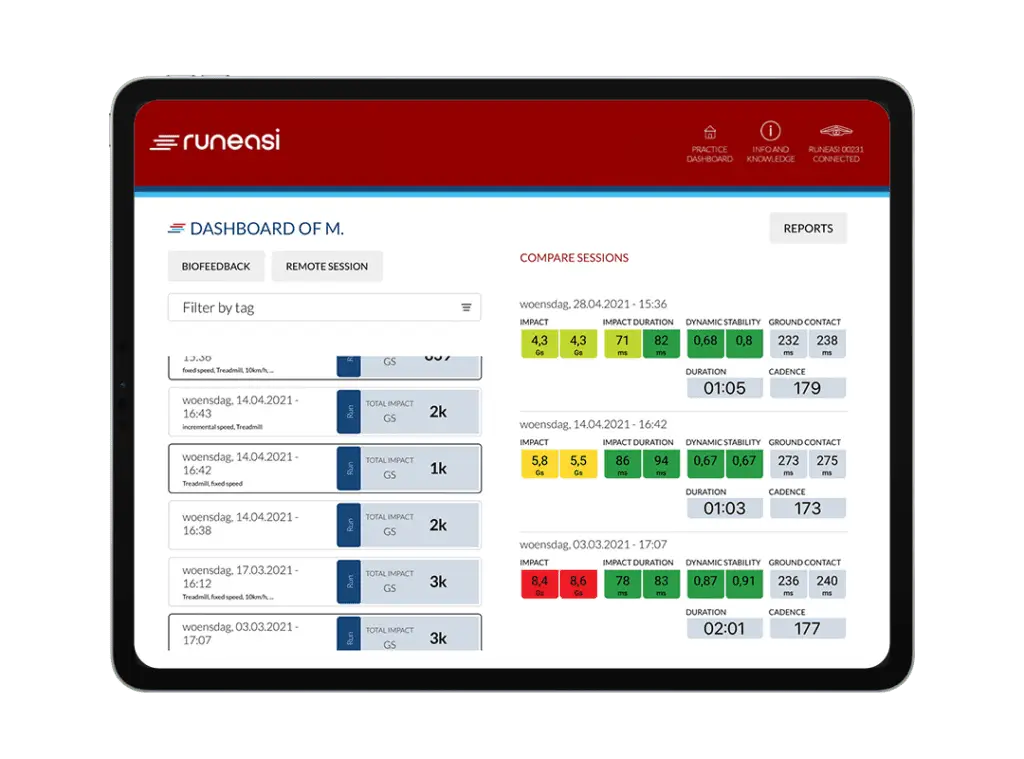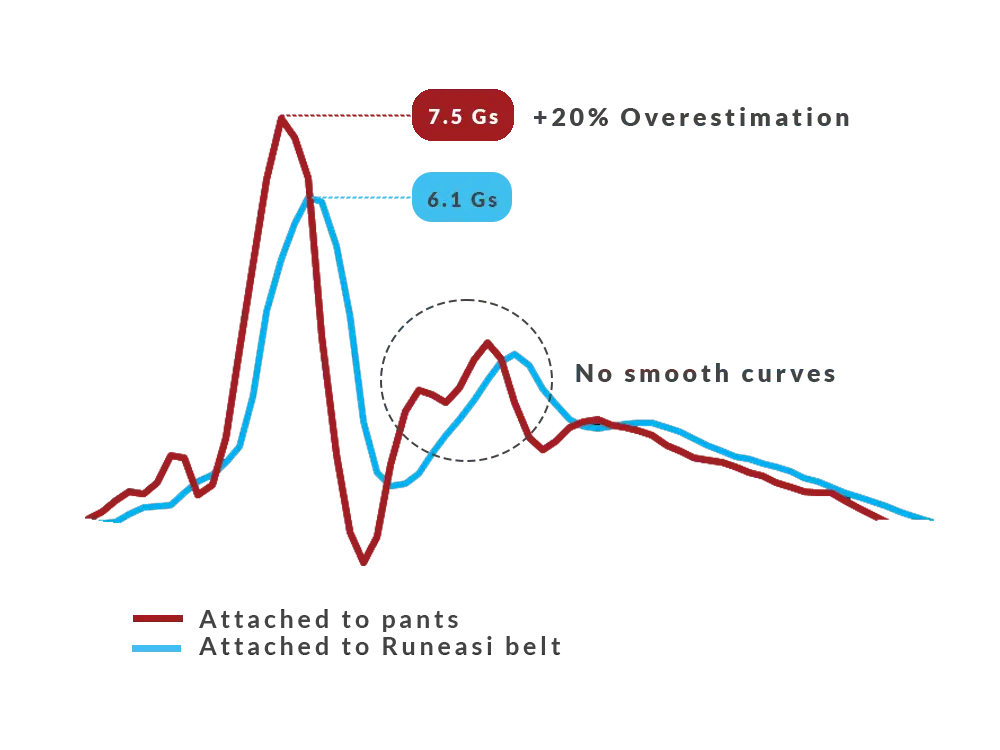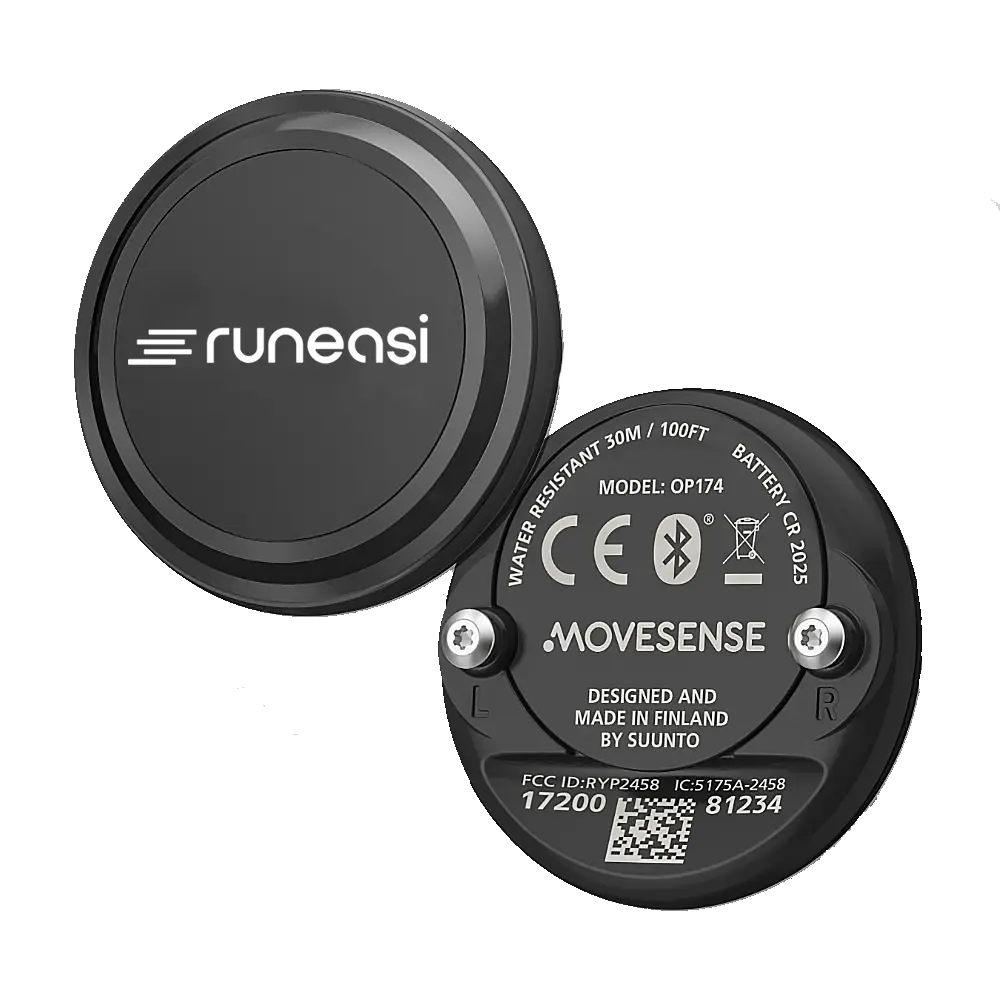E7: Embracing Tech Without Losing your Human Touch
With Mark Merolli
In this episode, Kurt sits down with Mark Merolli to explore where digital health meets physiotherapy — and why embracing technology is essential for the profession’s future. From his own journey into digital health, Mark shares how tech can empower rather than replace physiotherapists, and why understanding the psychology of adoption is just as important as the tools themselves. Together, they unpack the evolution of healthcare technology, what to look for when evaluating new solutions, and how remote physiotherapy is shaping the next chapter of patient care.
Key Notes
Augment, don’t replace. Technology should amplify what physios do best. Communication, reasoning, and care not replace it.
Patients are active participants. Today’s e-patients use web, apps, and AI to self-manage. Physios should help interpret, guide, and empower.
Adopt with evidence. Evaluate tools for quality, security, and purpose before adding them to practice. Shiny isn’t always useful.
Appraise critically. Use frameworks like MARS, DISCERN/HONcode, and ABACUS, and check PubMed or Google Scholar for validation.
Streamline workflow. Lean on EMRs, exercise software, billing automation, and AI scribes to save time for patient care.
Blend data with observation. Combine RunEasi metrics, force plates, and motion capture with visual and clinical reasoning.
Remote care is growing. Build systems that make off-site data meaningful and actionable for both patient and clinician.
Start hypothesis-first. Define what you’re asking before drowning in data let questions guide insights.
Adopt early, but wisely. Pilot small, measure outcomes, and scale what truly helps.
Understand adoption psychology. Use frameworks like Diffusion of Innovation or Crossing the Chasm to support colleagues at different adoption stages.
Challenge tech myths. Digital tools aren’t impersonal or “for the young”; when validated, they can match in-person outcomes.
Mark’s go-to tools. RunEasi, VALD systems, Physitrack, AI note-taking, EMRs evolving toward integration but not yet seamless.
Full Audio Transcript
00:00:07.200 –> 00:00:40.140
<v Kurt>Hello and welcome to the Physio Insights podcast. I’m Kurt Schütte, co founder of Runeasi. At Runeasi, we’re building running gait software designed to help rear professionals better understand their patients and athletes so that they can make smarter, data informed decisions in their care. Along the way, we sit down with thought leaders from around the world to explore expert perspectives and evidence based insights. Our goal: to give you the tools, insights, and reasoning you need to elevate your clinical practice and empower your athletes.
00:00:40.735 –> 00:01:18.345
This is the Physio Insights podcast. Today’s guest is associate professor Mark Maroli, a leader in digital health, titled sports physiotherapist, an academic at the University of Melbourne, and a thought leader who’s actively reshaping how we integrate technology into clinical care. From a hands on practice to global advocacy, Mark is shaping the next generation of physios to embrace what’s next and what’s to come. Welcome to the pod, Mark.
00:01:18.665 –> 00:01:28.830
<v Mark>Thank you, you flatter me. I hear someone talk like that and makes me realize how busy I am. Absolutely. No, thank you. It’s great to see you as always and really nice to do this with you too.
00:01:28.830 –> 00:01:36.505
<v Kurt>Yeah, Mark, I’m really curious to know what’s initially sparked your interest in digital health and physiotherapy?
00:01:36.505 –> 00:01:53.380
<v Mark>Look, I mean honestly it is a clinical story. I’ve always been really interested in technology. Think I say to people if I wasn’t a physiotherapist I probably would have done something in innovation and IT. So you kind of come back to these loves, find a way to merge them. So it’s no real accident, I don’t think.
00:01:53.380 –> 00:02:10.955
But honestly, it’s probably been a clinical story. You know, it makes you realize how long you’ve been practicing for now. I’m in my nineteenth year postgraduate now. I started working at an interesting time. It was probably about 02/2006, 2007 was when I started as a graduate.
00:02:10.955 –> 00:02:46.895
You know, we all kind of know that time it was, it’s like a trip down memory lane, but as far as IT goes, it was the, you know, the beginning of Facebook and things like Twitter, which is now x, began in 02/2007, 02/2008. IPhone came out. Everyone was using Google. So I started practicing in what I would say was still a bit I can’t think of a better word, but a a very patriarchal paradigm, if I can use that phrase, hopefully people know what I mean. So by that, I mean, I started working and it was still pretty typical patients, you know, coming to see us, Mark, I’ve injured myself.
00:02:46.895 –> 00:02:53.840
Mark, I have pain. What’s wrong with me? Tell me how to fix it. Fix it for me, you know, and and let’s go. That was what it was like.
00:02:53.840 –> 00:03:47.660
But within a really short period of time, and and I’m saying that’s because probably it was about that time where some of these things, internet, social media, mobile apps, were starting to ramp up. I personally was noticing that, and I use the phrase a paradigm shift, patients all of a sudden were sort of coming in to see me, you know, with I watched this YouTube video, I asked my group on Facebook, you know, here are some printouts from Wikipedia, you know, this is what’s wrong with me, fix. I definitely have patellofemoral pain syndrome, fix my patellofemoral pain syndrome, not what is wrong, you know. And so I’ve got to be honest that, yeah, it’s a participatory health story. I just started getting very interested in how patients were leveraging these things, you know, the internet, social media apps to engage with their own healthcare, and it kind of started that love story for me with health and technology.
00:03:47.740 –> 00:03:52.620
And yeah, that was ten, fifteen years ago and that was it. So here we are now.
00:03:52.620 –> 00:04:00.895
<v Kurt>Wow. Yeah. And how have you seen the landscape of technology grow and wave after wave? You know, how have you seen it evolve?
00:04:00.895 –> 00:04:23.340
<v Mark>It’s certainly evolved. Over the years, it started really basic. It was sort of, you know, just wanting to understand how people are using technology to support, you know, this health self management. It was pretty static, you know, as it may be at best online health information, social networking, etcetera. All of a sudden, you know, that, you know, iPhone, smartphones, Android apps exploding onto the market.
00:04:23.980 –> 00:04:32.295
Around that same time so I did my Ph. D. At that time. So that was 2012 to 02/2015. Again, it’s a while ago there.
00:04:33.255 –> 00:04:55.700
But there was also an interesting movement that I was sort of following peripherally. The it’s called the quantified self movement. Yeah. Which, you know, self tracking is a huge thing now, and this is kinda, again, perhaps I won’t say early days because there’s been people in this space for a lot longer than me. But, you know, as far as those sorts of things go, that was a while ago as well.
00:04:56.715 –> 00:05:21.770
So we sort of sit all of a sudden starting to see people with basic wearables, activity trackers, tracking basic physiological signals, heart rate, heart rate variability, sleep, you know, these sorts of things. And so that was happening too. And then, you know, fast forward, you know, that’s that’s base is getting a lot smarter. You know, the computing is improving, so telehealth, you know, is really ramping up virtual models of care. Yeah.
00:05:21.770 –> 00:05:30.635
And now here we are talking about artificial intelligence which is kind of running and changing everything. So it’s certainly evolved and it’s evolved quick.
00:05:30.635 –> 00:05:46.630
<v Kurt>Yeah, yeah I can see it also on our side as well. I’m curious to know what triggered you to start your PhD, what inspired you? I read that you did a stint in The UK. Was there something there that kind of gave you some of the inspiration? Yeah, look, big time.
00:05:46.630 –> 00:05:58.365
<v Mark>And you’ve certainly done your homework. That’s right. I worked for a few years, and then I moved to London. A lot of Australians do the work and travel abroad. Fortunately for us, it’s a relatively simple registration process.
00:05:58.365 –> 00:06:44.480
It was a pretty random story for me. I had a lot of friends who weren’t physiotherapists, you know, into my extended social network that worked in consulting, worked in media and communications, worked in other areas of business. And I think I found at the time that, you know, I’m I’m working as a physio, but there was a lot more happening in the online space. And I spent a lot of time with these people in the sort of digital media, content curation, content creation space. As I said, it was a a sort of having a lot of Friday night conversations over a glass of red wine about, you know, science communication, media communication, using social media to promote business communications, etcetera.
00:06:44.480 –> 00:07:31.790
It was just really nice to kind of be part of these conversations and friends talking about online analytics, website traffic, search engine optimization. And, you know, I think, as I said, when you’re kind of interested in the space already, your ears pick up, and it’s hard when you’re a physiotherapist and a health professional to not immediately think, how does this apply to what I know and what I do? And so look, yeah, long story short, there was a lot more happening in Europe and The UK than there was in Australia at the time. I was very interested in what these iPhones were all about, and apps, and how people were Googling health symptoms, and using social media. Yeah, look, long story short, Kurt, I was meant to do my PhD on the thoracic spine, which was always my clinical career interest.
00:07:31.950 –> 00:08:11.615
Still is, I guess. But I got really interested in technology, I came home, and I said to my old dean of physiotherapy at the time, Hey, look, yeah, you know, I know I was going to do this, but I’m really interested in how people are engaging with technology for their self management, and can I do my PhD in this area instead? And, you know, she’s always, she was a wonderful mentor, still is someone I spend a lot of time with coffee and breakfast with. And she marched me straight over to we had a health informatics, health and biomedical informatics unit in the medical school at the University of Melbourne, introduced me to the director, and the rest is history, and kind of became a career path.
00:08:11.615 –> 00:08:13.295
<v Kurt>Yeah, I can relate to that as well.
00:08:13.295 –> 00:08:15.615
<v Mark>So it started with a London story.
00:08:15.855 –> 00:08:35.790
<v Kurt>Yeah, yeah, I can relate to that in a sense that you can often see that innovation sometimes happens when you either you go abroad, you pick up the new ideas, new skill sets, new perspectives, and then you start, you know, sometimes on the plane ride your back you start thinking, how do I marry this with my passions? What I hear from you, your passion’s always been in health.
00:08:36.005 –> 00:08:48.645
<v Mark>Pretty much. And I mean, look, you know, to jump back in, it always has come from health first. I’ve never not practiced as a physiotherapist. Even still now, I’m an associate professor at the university full time. I’m a bit of a sucker for punishment, I think.
00:08:48.810 –> 00:09:11.495
I’m still work I have my own small clinic, so I’m still, you know, I’m still working clinically, but it’s it’s always kinda come from that desire to to treat, to practice, and how, you know, people and health outcomes and how I can improve that. So that that I mean, that that’s my story. I mean, others might have the opposite. But, yeah, it always came from that clinical passion and then bring the technology into it.
00:09:11.495 –> 00:09:17.495
<v Kurt>Yeah. And would you mind taking us and the the listeners through your PhD? What was your focus and what was your main objective?
00:09:17.690 –> 00:09:50.400
<v Mark>Yeah, yeah. So that was probably the beginning of the kind of what is my profile now in digital health. As I said, the broader field, and I think Europeans connect with it probably even better than we do in the Southern Hemisphere, but we call it participatory health informatics. As I said, I sort of told you that story about what I was observing clinically. Look, yeah, fundamentally, I wanted to understand how people at that time were engaging with the internet, social media, digital health tools as part of their sort of health self management.
00:09:51.520 –> 00:10:35.415
But as I said, was it was more about a fundamental understanding of how people engage with technology, not what technology we use per se, but more so why do we use it, why do people use it, how can it be used to support health outcomes. When I did my PhD, we, we coined this term therapeutic affordances, which is based affordances, based in human computer interact well, ecological psychology, but then adapted to human computer interaction. But yeah, honestly, it was because I knew fundamentally that if I started doing work and researching in the technology space, the technology was going to move really quick as it has. Here we are living and breathing. It was going to evolve.
00:10:35.815 –> 00:11:00.695
I didn’t want to get bogged down in researching any one particular technology. I didn’t want my PhD to be about Google or Facebook or, you know, iPhones. I wanted it to be more about, you know, at the heart of it, you know, it’s all the usual things, behavior change, implementation science, and all these sorts of things. How can we better understand how and why people use technology to support their health? And that was pretty much my interest.
00:11:00.695 –> 00:11:16.650
And we’ve been able to keep that research going. As you know, often, you know, research interests and and things morph, evolve. Certainly for me, it has. It’s kinda started there, but I’ve got PhD students and things working in that space still, but I’m certainly doing lots of different things now, but that’s where it
00:11:16.650 –> 00:11:21.370
<v Kurt>came from. Would you mind to elaborate what is the definition of the participatory aspect of it?
00:11:21.530 –> 00:12:03.715
<v Mark>So participatory health, participatory health informatics kind of, I guess, born in that idea of there’s another sort of phraseology we use attached to that called e patients. This was very much sort of tied to that quantified self movement as well. But really just the idea about, so when we talk about participatory health and participatory health informatics, you know, in the technological sense, is essentially that. It’s how is technology supporting or how are people engaging with technologies to support their own health actions and behaviors, and, you know, very much living in that sphere. And there’s a lot of sort of international colleagues that do research in this space who aren’t necessarily physiotherapists.
00:12:03.955 –> 00:12:20.560
It’s social media, it’s wearables and activity trackers, it’s gamification, it’s quantified self. Yeah, it’s basically any technology that encourages and allows people to be more active participants in their own healthcare. That’s probably in a nutshell. Interesting. And how do
00:12:20.560 –> 00:12:38.145
<v Kurt>you see the role of the physiotherapist potentially, the reshaping of participatory health and how we see, you know, if the average patient is perhaps even now using ChatGPT or using AI to answer their health questions or get information, how do you see the relevance of the physiotherapist in this?
00:12:38.340 –> 00:13:33.315
<v Mark>That’s a great question, and this is kind of that area that’s probably got a lot of people maybe a bit apprehensive, stressed out about, etcetera. I think this is really about, and certainly my personal stance, perhaps a biased one, but I hope it sort of speaks to, you know, fundamentally what people want to hear, and I’m not just saying it, I believe it. But this whole idea of technology participatory health for me is that we’re seeing technology as a support for what we do, as something that augments our ability to care for patients, our decision making, not replacing it. I sincerely do believe that this isn’t about technology replacing the physiotherapist, more so, you know, helping us to do what we do really, really well. You know, of course, there’s gonna be aspects of everyone’s work where technology is gonna play a bigger role.
00:13:33.315 –> 00:14:11.760
Automate, perhaps. Yeah, may may maybe replace, but when when we say replace, I’m kind of looking at it as a replacing the things that that take up our time, that take us away from our patients. What do physiotherapists do really well? It’s it’s rapport building, it’s therapeutic alliance, it’s communication, it is the decision making, even treatment. So, technology, artificial intelligence, data driven decision making, I like to look at those sorts of things as just, you know, supercharging our thinking, helping us uncover insights and information that otherwise would have been really, really difficult to obtain before.
00:14:11.760 –> 00:14:37.840
So for me, I try to see it pretty enthusiastically from an evidence based and educated place, but it’s about complementing what we do, not overshadowing it. Our clinical expertise, you know, is still really much there in what we do. But, you know, if we chase shiny new toys and things like that, yes, of course, we risk losing that human touch and critical care. But for me, yeah, it’s about augment not replace.
00:14:37.840 –> 00:14:56.705
<v Kurt>I really like that mindset. It’s something that we also, yeah, from Runeezi’s perspective as well, try to reiterate is that augmentation not replacing. And if there is replacing, really like how you phrased it. That you would be replacing things that are perhaps the mundane things that just drain energy and time. Yeah.
00:14:56.705 –> 00:15:11.420
Take away time, workflow, make workflows more efficient. Are there specific aspects of that workflow efficiencies that you’ve already noticed in your practice where you say, ah, I’ve managed to save time in these areas? Yeah, no
00:15:11.420 –> 00:15:12.620
<v Mark>that’s
00:15:11.565 –> 00:15:11.965
<v Kurt>again
00:15:11.965 –> 00:15:33.080
<v Mark>a really good point too. I was thinking a little bit about this, kind of on one hand we’ve got like, how does it improve patient care? That’s a huge part. But then at the same time, so I also think about like seamlessly weaving it into, yeah, the workflows. And it’s interesting, because at the moment, as I said, I’ve kind of got a very small practice, which is myself, one other practitioner coming on part time.
00:15:33.560 –> 00:16:26.270
And when you’re a sort of small outfit, you realize how much you value getting time back. And you know, it’s a constant battle and thought process around, hey, how do I improve my efficiencies or my inefficiencies? So yeah, it’s things like using technology, add ons, plug ins, as best you can to automate certain things. The sorts of things that do drain time if you don’t set them up well, which is things like exercise prescription management platform, billing and scheduling, note taking. One of the areas that people are excited in these days or getting very, very interested in is, you know, digital AI scribes and and note taking, and I I certainly play I mean, that’s space too now, and I find that being able to have things set up well to ambulantly record, take notes, referrals and letters, that stuff helps NoWent.
00:16:26.270 –> 00:17:03.425
Having your having a robust patient management system, electronic health record, you know, these sorts of things, clinical information system that ‘s got intelligent forms set up, and recalls, and patient messaging. You know, most systems have these things now, but it’s how well are you leveraging them and utilizing them. So, yeah, I I find now as a kind of, you know, almost as a solo practitioner, I’ve worked in large sports medicine practices and this for fifteen, twenty years, when you value your own time more, and you’re your own boss, and I’m not talking about my university work, but I’m purely clinical, yeah, anything to improve, that is a good thing.
00:17:03.425 –> 00:17:27.110
<v Kurt>Yeah, I also read up that you consider yourself an early adopter and I can also see, yeah, based on how you approach technology and how you embrace it and how your curiosity drives using it, adopting it, integrating it. I don’t if you’re aware of the technology curve that Jeffrey Moore came up with. I think it’s Crossing the Chasm. Another one. Yeah, yeah.
00:17:27.110 –> 00:17:27.430
I use
00:17:27.430 –> 00:17:28.470
<v Mark>it with my students actually.
00:17:28.885 –> 00:17:52.290
<v Kurt>Yeah, yeah. Yeah. I find it fascinating because you know you have different personas and profiles of people that are wanna be the first to utilize it to see how it’s integrated. Sometimes accept the you know the early kinks that come with it, or the technology sometimes has what they call child sicknesses in a sense that software is not all there and it needs some improvements. So how do you see the psychology of adopting technology?
00:17:52.290 –> 00:18:12.060
<v Mark>It’s interesting because, yeah, of those, all those models are fascinating. The other one that I like very closely attached to that is the Everett Rogers diffusion of innovation model. I’m not sure if you’re familiar with that. You probably know that one as well. So bell curve with early adopters, early majority, late majority laggards, I sort of late people to the party.
00:18:12.060 –> 00:18:44.200
It’s funny because I’m probably by nature inherently conservative. I wouldn’t say that I’m a wild risk taker. I think being an academic, my personality in general has always been quite, you know, research and make sure that I’m doing things, build up my evidence before I make decisions. Obviously, technology kind of is a little bit different in that sense. I I sort of grew up in a household where my father always really enjoyed technology and gadgets and was an early adopter.
00:18:44.200 –> 00:19:10.510
Not anymore. That’s the interesting thing. But, you know, we kind of always were exposed to new technologies and stuff, so I think in that sense, it piqued my interest. Mhmm. And so with technology, I I tend to jump in pretty early, but I’ve probably and it’s funny because you’d almost expect the opposite to happen because as people perhaps age, we become naturally more cautious, think, and just look at, yeah, the psychology of technology adoption in older adults, and there’s all sorts of things attached to that.
00:19:10.510 –> 00:19:49.655
But I’ve probably gone the other way, and and I think it’s partly because one, specializing in expertise in digital health technology. Two, you know, dabbling and playing more formally in the innovation space. I’ve got a sort of early stage startup of my own these days. I have a role at the university, which is a faculty role in our medical faculty to Director of Innovation role. So I think spending more of my professional life in innovation, enterprise, that sort of space, commercialization, working very closely with people like yourself, advising on startups and new technologies frequently, it’s probably forced me to sort of adopt a bit more of that innovation mindset fail fast, fail often.
00:19:49.815 –> 00:19:54.695
Mhmm. Yeah. Let let’s just give this a try. Let let’s yeah. I’m I’m always very curious with technology.
00:19:55.510 –> 00:20:20.895
I like to give it a go. I like to try it. I mean, that that being said, don’t get me wrong. I mean, particularly when we talk about clinical and formally, I might be quick to give things a go and adopt technology, but I don’t think that replaces due diligence. Critical appraisal thinking, I certainly have my own kind of set of criteria and questions that I want to ask of the startup or, you know, anyone’s technology that I’m thinking of adopting.
00:20:21.180 –> 00:20:35.900
‘m happy to entertain something, have a meeting, have a play trial, but they don’t all make their way into the toolkit. And they’ve got they’ve got to pass a bit of a sensibility check there. So Yeah. But I mean, again, that’s just me talking. That that doesn’t speak to necessarily the psychology of adoption for everybody.
00:20:36.065 –> 00:21:04.900
I can’t speak for everybody else, but certainly, you know, that’s kind of one of the things that I advocate for, I teach, lecture on, I consult on, and that is things like, you know, it’s kind of part of a digital health literacy story, isn’t it? In the sense that, you know, people wanting to adopt technology, you want them to have the tools at their disposal to critique and scrutinize and you know, what what’s the evidence for this? Okay. You’re thinking of downloading and using this app. Well, where was it built?
00:21:04.980 –> 00:21:13.995
What are the credentials of the people that created it? Where is your data stored? How is it used? Don’t just download it. Have a think, you know?
00:21:13.995 –> 00:21:17.035
So that all comes with adoption of technology as well.
00:21:17.035 –> 00:21:21.595
<v Kurt>Do you have a specific checklist that you use or objective criteria that you that you teach?
00:21:21.595 –> 00:22:25.060
<v Mark>Or I I kind of have my own little bit of a checklist, but in probably more recent years, it’s become somewhat of a a morphed exercise which incorporates a variety of things. I probably take, I would say, a framework based, evidence based approach to it, and that is probably, I would say, I have versions of this, but a combination of things like, depending on the technology, I ask all sorts of questions that would satisfy criteria based on, and I don’t know if you’ve heard of these, you probably have, but not all your listeners necessarily, but there’s things like the mobile application rating scale. It’s been around for a while now, the MARS, which is a quality appraisal validated scale for critiquing mobile applications. There are things like with online resources, you know, there used to be the ON code, the health on the net code, the discern principles, so that, you know, again, a way to scrutinize online health information. I also apply aspects of behavior change principles.
00:22:25.060 –> 00:22:44.415
You know, there’s scales for scoring behavior change techniques. You know, if I want to implement a new technology or an app, you know, into practice, How does it score on there’s a scale called the abacus. Abacus, like, in mathematics. You know, how many behavior change techniques does it foster? The more the more the better.
00:22:44.415 –> 00:22:58.040
So yeah. So look. Long story short, I mean, I I have criteria spreadsheets with sort of things I I try to rank. One of the big ones as well, which I appreciate it’s not easy for a startup, but it’s things like, you know, is there evidence for this? Have they published research?
00:22:58.120 –> 00:23:22.330
Is validated? I don’t use them very much anymore because I use Runeasi. and other technologies, but I used to use apps like, you know, probably MyJump two and, you know, Runmatic and apps like that. But at the time, I was pleased, you know, pleasantly surprised because they published research about these and the validity, and I always say to people, jump on PubMed. You know? Jump on Google Scholar.
00:23:22.330 –> 00:23:32.505
Do a search. Is there any any evidence for this exact technology? If not, okay, we need to go the next level down, but there’s a lot of ways, long story short. Yeah, I mean,
00:23:32.505 –> 00:24:07.045
<v Kurt>I think that’s really important, especially as you see how things are evolving. I mean, we see things sprouting all over the place, the technology landscape, startups and coming it’s amazing to see the innovations. But like you mentioned, when you’re entering anything in the health space, clinical space, anything that might affect or be used in a clinical reasoning standpoint, you know, you wanna make sure that it’s valid, reliable, and it has all the security checks, know where the data’s going. 100%. And that’s gonna really To add value, the clinician, to the physiotherapist as well as the end user, the patient.
00:24:07.045 –> 00:24:10.885
At the end of the day we want the patient outcome and patient to be improving.
00:24:11.270 –> 00:24:40.810
<v Mark>Yeah, it’s interesting, and that’s probably kind of come about for me more on sort of being a consultant in this space, to instead actually pursuing my own aspirations of startups and invention. But you’d be surprised how many people create things and develop things, and you they haven’t really thought at all about metrics of success and outcomes and, you know, what what does this do? What’s it intended to do? And they can’t answer that. If it’s something clinical, if if we’re not talking about, you know, improving health outcomes, what are we doing here?
00:24:40.810 –> 00:24:59.385
<v Kurt>Yep. And how do you see other physiotherapists perceiving this? I mean, going back to that curve again. Yeah yeah Maybe that one’s the laggards or maybe they’re the majority laggards and they’re, you know, they’re hesitant and maybe they don’t have the time and the resources to do their due diligence as you would. You know, what advice would you give to a physio like that?
00:24:59.385 –> 00:25:08.080
<v Mark>You know, yeah, understanding why people might be laggards or late majority coming to the party late, you know, that that’s a different conversation.
00:25:08.080 –> 00:25:08.480
<v Kurt>Mhmm.
00:25:08.480 –> 00:25:33.685
<v Mark>But at the same time, I think there’s a lot of people out there that kind of, on one hand, perhaps still think of the technology, digital tools is like a gimmick, like something a toy, something impersonal. Again, there’s also probably, you know, that’s a. B, there’s also, yeah, those that think that it’ll completely replace what we do. There’s physios, and then probably c, you know, it’s that, you know, the technology is only for for, say, the young or the tech savvy. You know?
00:25:33.685 –> 00:25:50.480
So so there’s there’s kind of all these various reasons for that. Know? It’s kinda comes with the sort of misconceptions, about digital technology. I guess what I’d say to those sorts of people I mean, I I don’t know. We might have a sort of further conversation as we kind of wrap this up, around tips and thoughts.
00:25:50.480 –> 00:26:49.265
But I think one one thing is that kind of along those lines of of technology just being this sort of extra thing and, you know, a shiny new toy, I think, you know, technologies are getting unbelievably accurate, one, so there there can be a bit more, I think, bit more faith and trust there. Yep. In reality, when I when I did my PhD and when I sort of started formally in this space, and to a large extent, I should say, of throwing my hands up, that a lot of research still, like the space has got a long way to go, but a lot of the research ten, fifteen years ago was quite exploratory, you know, sort of early cataloging type research, you know? But in reality, more and more research, there’s more and more emergent studies now, you know, showing efficacy, safety of the physiotherapy rehab tools. You know, we’ve sort of seen it with wearables, with apps, with telehealth, that in some situations, not all.
00:26:49.345 –> 00:27:21.335
Digital therapeutics and interventions can match in person outcomes, you know. So I’d say particularly kind of with the telehealth literature apps as well, you know, technology can improve patient adherence, motivation, you know, all sorts of things. So I think on on that hand, I’d sort of say, like, cynicism’s good, but but be open, you know, to to kind of the space maturing, and and becoming a genuine part of our vernacular now, not just something over there. Okay. Yeah.
00:27:21.335 –> 00:27:22.935
Plenty plenty more things too.
00:27:23.175 –> 00:27:27.095
<v Kurt>May I ask, what has what has made it into your toolbox, your toolset?
00:27:27.410 –> 00:27:47.535
<v Mark>A combination really. There’s a lot. I mean look, largely the nucleus is probably about adding greater objective data, to my assessments. Precision, a big part of my toolkit’s about patient assessment, yeah, and helping you with that decision making treatment formulation. Obviously, let’s start with Runeasi.
00:27:47.535 –> 00:28:13.765
Runeasi. is very much in my toolkit. It lives on my desk, so that it’s very easy to get to. But that’s, you know, been a game changer for a gait and running analysis. I’m excited to start playing more with the with the jump. I use, again, appreciating that there’s other technologies in the performance measurement space, but I use disclosure wise, Valve’s measurement systems and apps.
00:28:14.005 –> 00:28:37.965
You might know Valve, they’re sort of international company now. They started in Australia, where I am, but I, you know, force plates, digital dynamometry, goniometry, motion capture, I use all of that stuff. The disclosure is I actually authored their, practitioner’s guide to digital health recently. So I’ve sort of got a long long sort standing relationship there. Look, select apps as well, I mean, variety of apps.
00:28:39.565 –> 00:29:09.175
Yeah, I’ve used apps like PhysiTrack for a very, very long time. That’s probably almost the obvious baseline for most people these days, that exercise prescription software. I am certainly engaging now, early days, you know, cautiously adopting optimistic space in AI note taking, digital scribes, and that’s made its way into my toolkit. And then look, all the obvious things, right? You know, my patient management system, electronic medical record, all those sorts of things that are obvious.
00:29:09.175 –> 00:29:41.105
It’s, you know, that’s kind of where it all starts and plugs into. The connectivity interoperability discussion, that’s that’s a whole another story. You know, we, you know, how much time have we got? But but, you know, certainly, a lot of them do connect to my EMR, but not necessarily in a in a seamless way yet. And then, you know, I am also playing with, you know, other, you know, no no code app development platforms and trying to build a few of my own things these days, and so on and so forth.
00:29:41.105 –> 00:30:05.015
But that, you know, that’s a watch this space moment still. But, yeah, run easy, gate analysis, running analysis, performance analysis, running the run easy is part of that, but, you know, force plates and and motion cap and dynamometry, AI note scribes, patient apps, electronic medical record, telehealth. Yeah. That’s probably the main stuff. Probably missed something in there, but they’re the main things.
00:30:05.015 –> 00:30:09.655
Toolbox is nice and full. So it’s getting full. I need to upgrade and get a bigger one.
00:30:13.590 –> 00:30:35.555
<v Sander>Hi everyone. I’m so sorry to interrupt this podcast episode. My name is Sander and I’m the editor for this series. The reason why you are hearing my voice is because the software Gust and Mark used to record their video call, it malfunctioned without them knowing of it. So the second part of this episode never got saved.
00:30:35.635 –> 00:30:50.740
I sincerely hope you still got the chance to enjoy their conversation and we will re record a part two very soon. Make sure to leave any questions in the comments. Thank you for listening and thank you for your understanding.

